Menu
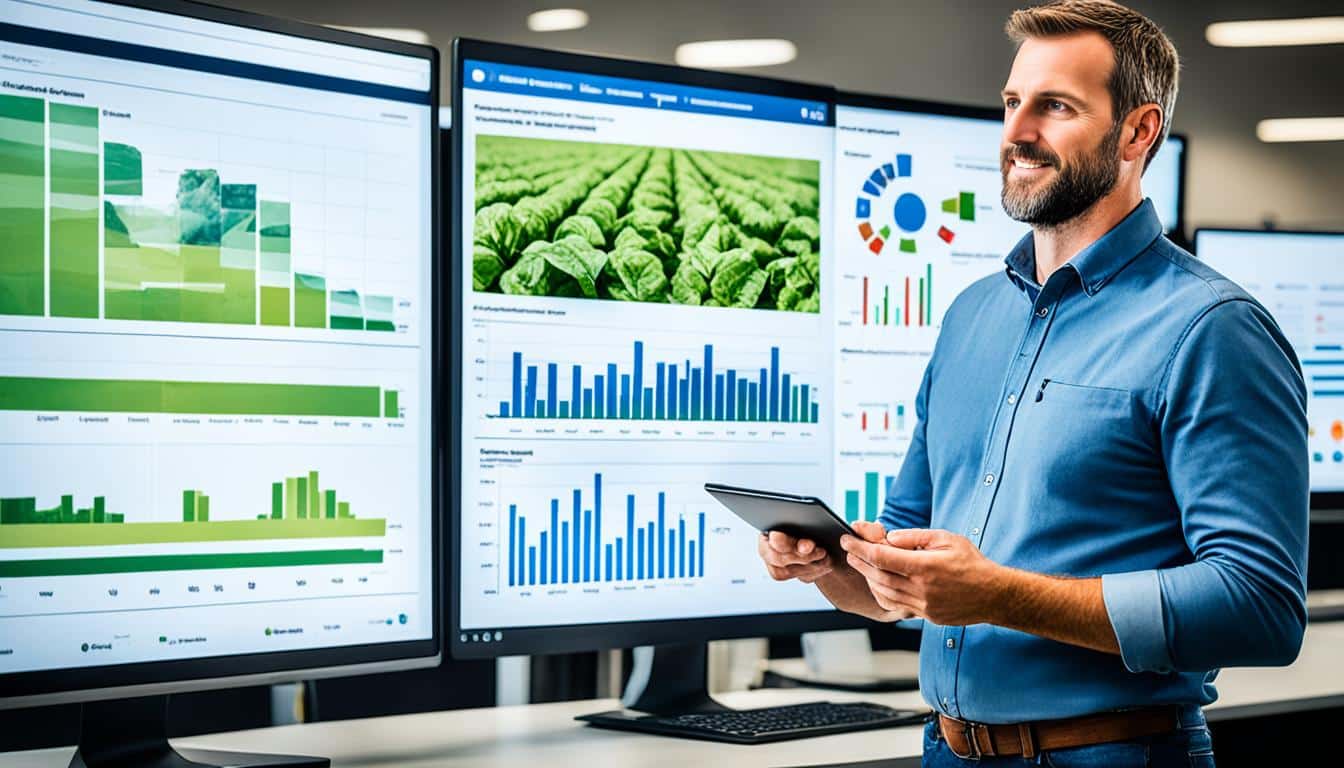
Today, about 80% of farmers use social media often. This high number shows how farming is changing digitally. While Facebook is big with farmers, many young ones like YouTube and Twitter. They spend a lot of time (28%) on social media. This is why using these platforms can be great for promoting farm products.
Farmers are now using their phones and tablets for work. This includes checking emails and surfing the internet. They’re moving from adverts in newspapers to being online. This shift means it’s critical to use advanced digital marketing in agriculture.
Having a smart retargeting plan can make online ads better. It can change visitors into loyal buyers. This means your ad work doesn’t just attract eyes but also keeps customers interested. It’s a well-proven method to bring undecided shoppers back and sell more.
The agricultural sector is in the midst of big changes thanks to digital marketing. Nowadays, farmers use smart devices for their work, showing a move into the digital world. Therefore, digital marketing for agriculture is key for reaching and interacting with farmers.
Today’s farmers pay a lot of attention to online ads made just for them. These ads are specific and reach the right farmers, making the brand known. By reaching farmers this way, marketers help them grow their crops better. This method uses data to make smart choices, helping the environment and saving resources.
Changing from old-style marketing to new digital ways is very important in farming. The use of smartphones and tablets makes it easier for farmers to connect with sellers and buyers. This change reduces waste and improves how products move, underlining the need for digital marketing to reach markets better.
But, not everyone can access these new digital tools, especially in rural areas. This problem needs solving to make digital marketing work for all farmers. By translating information, being culturally aware, and working with local people, we can overcome language barriers. Ensuring data safety also helps farmers trust new technology more.
Retargeting farm products has many benefits. It helps improve the sales funnel, saves money, and boosts brand awareness. It allows farm businesses to show their worth to potential buyers again. This can lead to more interest and sales.
Retargeting is key for improving sales funnel efficiency. It targets people who were interested but didn’t buy. It can lead to 10 times more clicks compared to showing new buyers ads. This shows the power of bringing prospects back.
Enhancing brand awareness in the agriculture field is critical. It’s not just about showing your brand but making it seen often by the right people. Retargeting does just that. It keeps farm products visible to potential buyers, which boosts brand recognition.
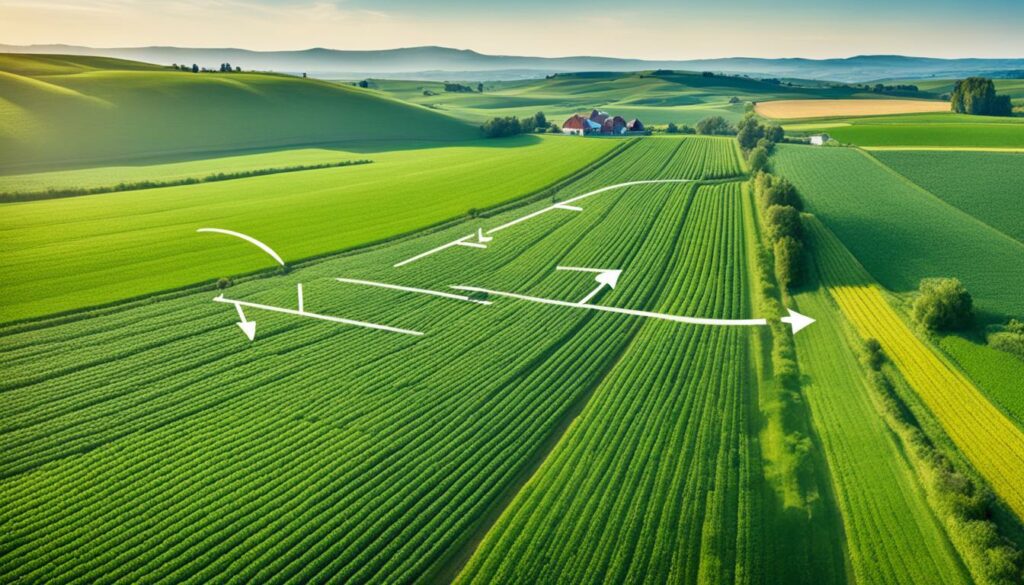
One big plus of cost-effective farming promotions is retargeting. It focuses on people who already have an interest, making it very efficient. On average, businesses see their investment double with retargeting. This efficient spending owes a lot to experts like WebFX. They and their 500+ team members help ensure these campaigns are very successful.
Ultimately, retargeting is a top method for generating farm product leads. It makes marketing spend smart and effective. By making potential buyers see the product multiple times, it significantly boosts sales chances.
Knowing your target audience well is key for effective marketing, even in agriculture. Finding the right audience boosts how well your money is spent and increases your chances of success. I’ll explain how to figure out who your audience is and how to group them in agriculture.
Diving into the agricultural world, splitting your market into smaller groups is essential. This way, you can better aim at likely customers. Here’s how agriculture does it:
Data-focused targeting is a must for better marketing. It lets you aim at the most likely customers more directly. With tools like Meta and Google, used by billions, you get the data you need for smart targeting. This method includes:
Learning from user behaviours and demographics is crucial. For example, YouTube videos help customers understand products better. Watching how people act on these platforms gives you clues about what they like and need. This knowledge helps with:
By using these methods and learnings, you can make your marketing hit the mark. Your ads will find the people who are most likely to respond well.
Creating strong ad campaigns for farm products needs a smart plan. This plan includes picking the right places to advertise, making eye-catching ads, and testing them well. For digital ads in farming, the least you should spend is $500 monthly per platform. So, it’s key to pick where you put your money carefully.
Choosing the best places to advertise depends on what you sell and who you’re selling to. Use Google Search for things like seeds or tools since it targets people ready to buy with no need for visuals. But for items like fresh fruits or machinery, Google Shopping is better. It lets you show off your products with images and prices to catch the eye of serious shoppers. Google Display helps make your brand known, especially if your products look good in pictures.
For places like Facebook, Instagram/Meta, and TikTok, which are great for beautiful or fun products, focus on building community and showing off. If you’re aiming at businesses, LinkedIn is your spot. It allows you to fine-tune who sees your ads based on things like the size of the company or what job they have.
Making ads that stand out is about more than looking pretty. They have to speak to what your customers need or dream of. This is especially true on Google Display, Facebook/Instagram, and TikTok. On YouTube, try using videos of your products being used or happy customers talking about them. This can really grab people’s attention.
It’s also key to use what you know about your customers to make ads that really speak to them. For example, you can change your ads based on who’s looking at them, making them more likely to buy.
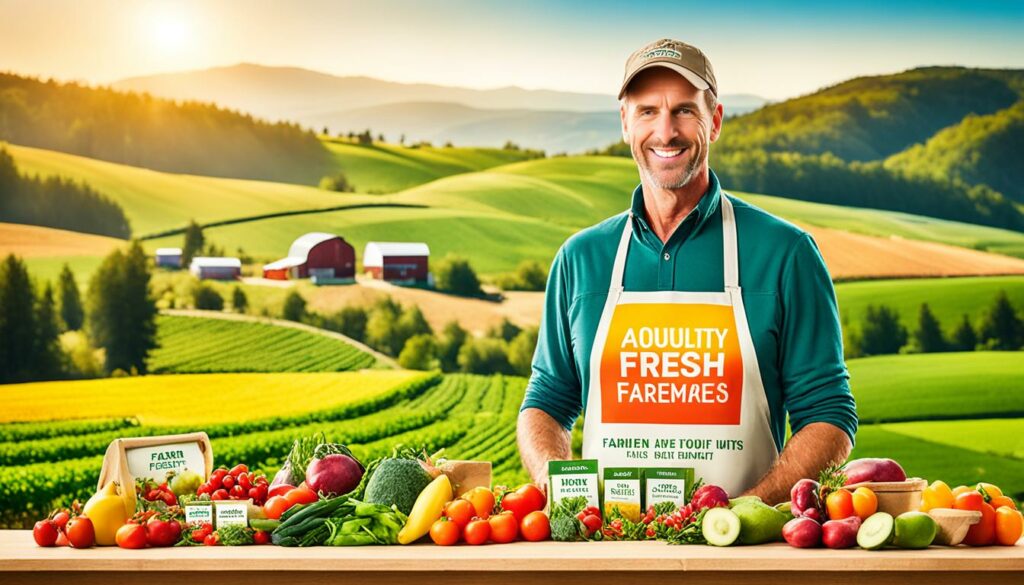
To make the most out of your money, always test and improve your ads. Start with A/B testing different versions of your ads to see what works better. Using tools that track how people interact with your ads lets you see what you’re getting for your money. This can help you make smart choices about where to put your ad spend.
Ads on Google Search, Google Display, and Meta often do a great job of getting people interested. But for actually making sales, think about using Google Shopping or Meta more. And remember, people who click on ads are more likely to buy than those who find you without ads. So, making your ads as good as they can be is really worth it.
In today’s world, using social media to retarget is key for selling farm products. Platforms like Facebook, Instagram, and LinkedIn offer great chances for success. Since about 80% of farmers are on social media, it’s a big opportunity.
Facebook is big for farm promotions, letting businesses target people well. By using Facebook to market farm products, companies can show ads to a lot of interested users. Instagram is also good for farms, especially for reaching younger people. Sharing beautiful photos and videos can really get people’s attention and increase sales.
LinkedIn is special because it’s for professionals. For farmers, it’s a way to reach important people in their industry. It’s great for business-to-business (B2B) deals, making strong connections by sharing useful content.
Knowing if social media campaigns work is vital. Facebook and Instagram have tools for analysing your ads’ performance. By looking at these results regularly, you can make your strategies better and increase their success.
Email marketing is a great way to reconnect with people interested in farm products. It lets us talk directly to potential customers. This method works best when we consider a few key points.
Success in email marketing depends on a strong list of subscribers. Platforms like GetEmails are great for identifying visitors who don’t leave their email. Using such strategies, some eCommerce businesses have seen a 20% boost in their sales. But remember, growing your list naturally through your website and social media is important too.
Emails to farmers need to be more than just sales pitches. They should mix promotion with useful information. Making your emails interesting and helpful ensures they catch the reader’s eye. This can lead to more purchases and foster loyalty over time.
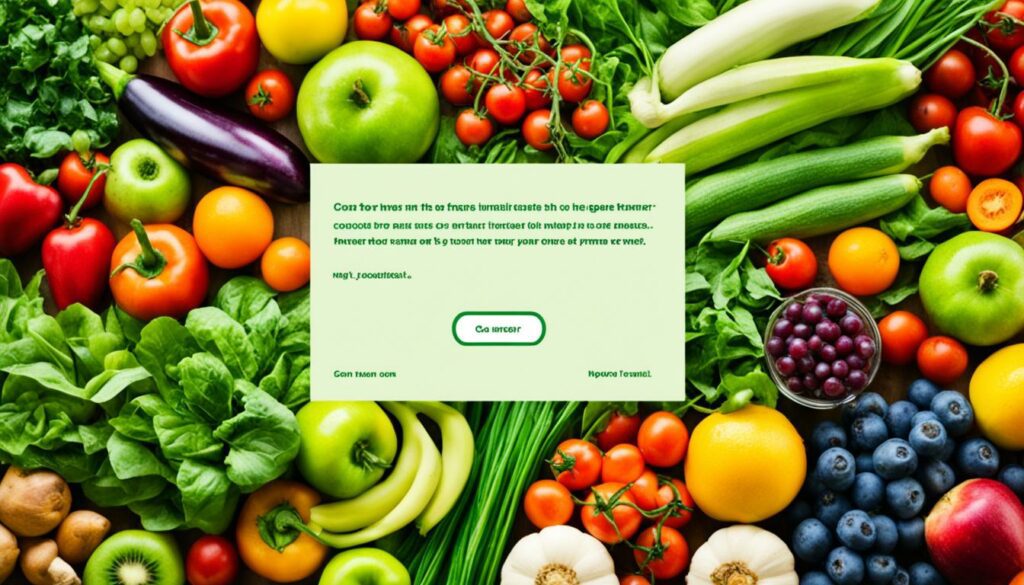
Automating and tailoring your emails can boost how engaging they are. Automated tools make sure your emails are timely and relevant to each recipient. This approach covers everything, from special offers to post-sale follow-ups. It all helps keep your products in mind.
In the end, email marketing is an advanced way to talk to and keep farm product buyers. By working on your list, creating enticing emails, and using the right tools, it becomes a key part of farming marketing.
Google AdWords gives farmers a unique chance to show off their products to many people. Knowing some basic rules and using the right tools can really help farmers reach their target market. Let’s look at how to have a great Google AdWords campaign step by step.
At its heart, AdWords works on the pay-per-click (PPC) model. This means businesses only pay when someone actually clicks on their ad. It’s a cost-effective way to advertise and it often leads to a good return on investment (ROI). For every $1 spent on Google Ads, companies usually make about $8 back.
You can make your ads even better with call extensions, sitelink extensions, and other helpful features. These extras can really boost how well your ads do.
Choosing the right keywords is crucial in agriculture advertising. It’s key to know what your audience is searching for and pick long-tail keywords to meet their specific needs. Good keyword selection makes your ads more relevant. This can help improve the quality of your ads and make sure they’re seen by the right people.
Studies show that people who click on ads are 50% more likely to buy than those who come to the site on their own.
Managed well, your advertising budget can work wonders on Google. Since Google Ads run on a PPC model, you can keep an eye on metrics like impressions and clicks. This lets you spend money only on people who are truly interested. With PPC ads responsible for huge sales and leads in recent years, smart budgeting is a key to success.
Google Shopping allows you to show farm goods directly in search results. It uses great pictures and call-to-actions to attract buyers. This makes it easier for people to find and buy your products online. By using Google Shopping, farm businesses can improve their online ads.

Starting on Google Shopping needs a few steps. You must first make a Merchant Center account and connect it to Google Ads. This lets you easily add and control all your product information. To start well, plan to spend at least $500 a month per platform.
It’s key to make your product feeds the best they can be. Make sure titles, descriptions, and images are clear and attractive. Good photos, correct prices, and detailed info will make your products stand out. This will get more people to see and buy them.
Keep an eye on your Google Shopping ads after they’re running. Use Google’s tools to check on things like how often people click on your ads. This info will help you make adjustments to meet your goals. For example, Farm & Home Hardware saw a big increase in website visits and sales thanks to Google Shopping.
Google Shopping can really help businesses by making their farm products stand out. It connects you with people who are ready to buy. Here’s a comparison of how different online platforms can help:
| Platform | Primary Benefit | Best For |
|---|---|---|
| Google Search Ads | Text-based, high-intent users | Products not needing visual showcasing |
| Google Shopping | Visuals, prices, and reviews | High-intent customers directly from search |
| Google Display | Imagery and video content | Building awareness and driving traffic | YouTube | Video explanations | Raising product awareness |
| Facebook & Instagram | Visual content and stories | Building awareness and lead generation |
In the realm of data-driven decisions agriculture, the quality of customer data is vital. It’s a key pillar for creating efficient retargeting strategies. Knowing customer behaviours, preferences, and what they buy is essential for any business.
Having good customer data helps agricultural businesses customise their marketing. This means they can make their messages better suited to the people they want to reach. As a result, their marketing is more effective. It helps engage their audience better and increases their return on investment.
Understanding customer data is crucial, according to the Gartner Annual Chief Data Officer Survey. They found it’s the second-biggest challenge inside companies. This shows why it’s so important for agricultural businesses to be skilled in handling their customer data.
When businesses collect data well, great things can happen. For example, the retailer Howe increased their sales by 250% just by knowing who their audience was. They collected detailed data on over 12 million farming consumers. This made their marketing more focused. Plus, a customer quiz they made was very popular, showing that interactive data collection works well.
Ultimately, having high-quality customer data is crucial for agricultural firms. It helps them make smart choices, improve their marketing strategies, and connect better with their customers. Using data for marketing means more people will notice them online, interact more on digital media, and buy their products more often. This all shows how important quality data is in today’s marketing world.
| Key Benefit | Description |
|---|---|
| Increased Online Visibility | Boosts brand awareness and expands audience reach by leveraging digital platforms. |
| Targeted Marketing Effectiveness | Enables precise segmentation and personalisation, improving audience engagement. |
| Cost Efficiency | Utilises social media, SEO, and quality content for budget-effective advertising. |
| Lead Generation Improvement | Enhances lead generation through user-friendly websites, compelling content, and email marketing. |
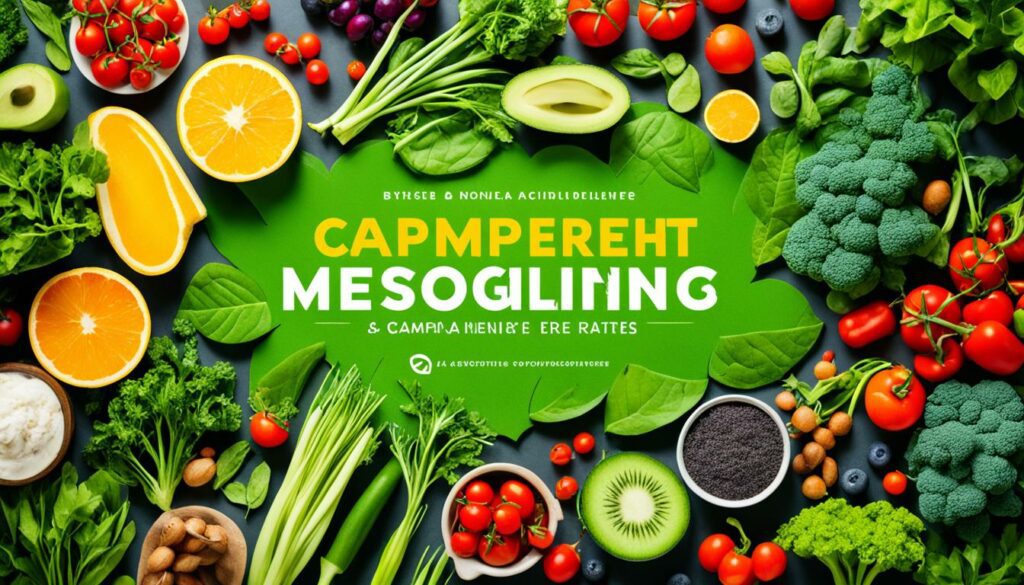
Good retargeting campaigns rely on us tracking important goals. These goals give us clues about how well the campaign is doing and where it could be better.
Indicators for these campaigns include metrics like how many times your ad is seen, how many people click it, and more. For example, retargeting can make more people buy by up to 278%. This shows it’s very effective.
Using tools like Google Analytics and Facebook Pixel can help us understand these indicators better. They track what people do on the internet so we can market to them better. For example, Facebook’s dynamic ads help make ads that fit even better, saving time and showing the right products.
To do well in marketing, it’s important to think carefully about what the data shows. Trying different ads for different groups and making sure ads answer their needs is key. Also, showing that customers trust your product, like with good reviews, helps a lot. Using emails and ads on lots of websites together can make campaigns much more successful.
The following table shows key KPIs and why they matter:
| KPI | Definition | Importance |
|---|---|---|
| Impressions | Number of times an ad is displayed | Measures ad reach |
| CTR | Click Through Rate | Indicates ad engagement |
| Conversions | Number of desired actions taken | Assess effectiveness |
| CPA | Cost Per Acquisition | Evaluates cost efficiency |
| ROAS | Return on Ad Spend | Measures profit from ads |
Combining SEO with retargeting makes marketing smoother and more effective. It lets farmers aim their ads precisely. This way, they can ensure their items find the right buyers. Such an approach boosts their profits.
For farmers to stand out online, their websites must be top-notch. A strong online presence has huge benefits, as shown by WebFX’s many happy clients. Fast-loading sites, compatibility with mobiles, and easy-to-use pages are key. They improve both user happiness and how high a website appears on search pages. Since most people’s online journeys start with a search, ranking high is super important.
Using interesting content can attract and keep farm customers. Things like blog posts, infographics, and videos can help. They should tackle issues farmers face and share useful tips. These methods not only bring in leads but also build trust in the farming community. With over 145 experts, WebFX ensures the farm content is spot on, making them a go-to source of knowledge.
For farms selling locally, being easy to find online is crucial. Geofencing can target those close by, encouraging visits. This type of digital marketing allows for precise local targeting. Through over 100 happy clients, WebFX proves they’re experts in this area. Their success stories highlight how vital local SEO is for growing local business.
When we look at successful marketing in agriculture, we learn a lot. Case studies in farming show creative and tested ways to market farm products. They give valuable tips for farmers looking to improve their marketing.
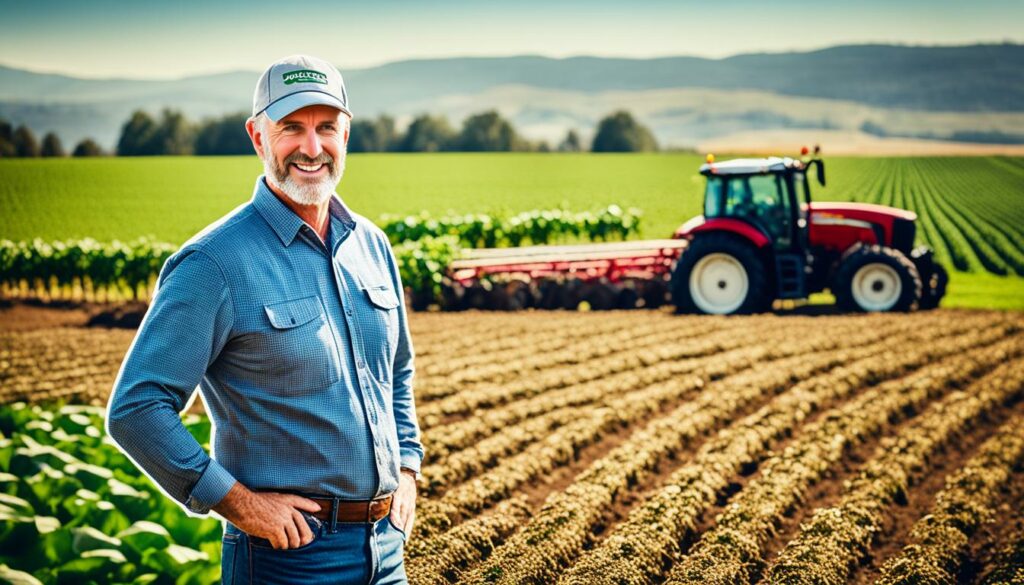
A Fastline campaign targeted a specific area and saw 60,000 to 75,000 views. This shows how focusing ads can make them more powerful. Their “Item Reminder” then brought people back to view products again. It proves the smart use of ads can keep people interested.
AuctionTime started a new feature that made buying easier before auctions. It included the option to buy products immediately or add them to a watch list. This change helped a machine be sold for more money than expected due to the extra attention and smart bidding strategies.
WebFX is also doing great work in the farm products area. Their big team and a lot of Google-certified people run ads that reach many potential buyers. They know how to target the right people with ads. Studies show these viewers are half more likely to buy than those who find the product on their own. This is a big win for turning ads into actual sales.
Social media ads are proving very effective too. Nearly a third of all online time is spent on these platforms. Grammarly used text and video ads on Facebook and Instagram to increase sales. This approach is a smart move for those selling farm products.
In conclusion, the stories from AuctionTime, Fastline, and WebFX show the power of retargeting in agriculture. By following these examples, marketers in the farming industry can do better. They can reach more people and sell more products.
| Company | Strategy | Outcome |
|---|---|---|
| Fastline | Geo-targeted Digital Campaign | 60,000-75,000 Localized Impressions |
| AuctionTime | Pre-AuctionTime Feature | Combine sold for $3,000 higher than listed |
| WebFX | Expert Retargeting Campaigns | Increased lead generation through paid advertising |
| Grammarly | Text and Video Ads on Google and Facebook | Significantly improved conversion rates |
Finding success in marketing farm products means dealing with big hurdles. These include making sure ads don’t become boring, managing costs wisely, and keeping the brand strong. To do well, it’s key to carefully handle these issues. This boosts how effective your ads are and helps achieve better marketing results overall.
People turn away if they see the same ad too often, lowering how much they engage. To beat this, mix up your ads regularly. Try different formats, designs, and messages to keep people interested.
It’s key to spend your money smartly. Use budgets and targets to your advantage. Focusing on people already interested can help you save money. According to a HubSpot study, many marketers aren’t sure which tools to use. But, finding the right analytics tools can make your targeting more accurate and save you money.
Keeping your brand look and message the same everywhere is very important. It helps people remember and trust your brand. This unified approach creates a strong and lasting brand image. Stick to presenting your brand the same way in all your marketing for the best results.
Summing up, tackling these challenges means being creative, smart with your money, and sticking to your brand’s look and message. With these tips, marketers of farm products can do better in engaging customers and increasing sales.
Retargeting in the digital world is a powerful tool for farm product advertising. It helps farmers find new customers online through smart targeting and planning. WebFX’s work over the last five years shows just how much can be achieved. They helped clients make over $6 billion in sales and gained more than 24 million leads. This proves digital ads can be very profitable when done right.
PPC ads, like those on Google, are especially useful for promoting farm goods. They bring back $8 for every $1 spent and make those who click the ads more likely to buy. Also, Google offers extras like call buttons and maps in ads. These make it easier for customers to reach out or find the product.
Facebook, Instagram, and LinkedIn also do a great job at targeting ads. They let you set the right budget and pick the best ad types. Together, these platforms have a huge audience of over 105,000 people in the farming sector. This is why they are great for reaching specific agricultural groups.
To sum it up, retargeting is crucial in farming marketing. It combines clear brand messages with smart targeting. Whether using Google or social media, the digital world offers many chances for farmers to succeed. Mastering retargeting is key to gaining more customers and making a good profit in the agricultural sector.
Retargeting strategies aim to catch the interest of people who have viewed farm products online.
This ensures they see the ads again. It helps farms be seen more, understands their audience better, and sells more.
Digital advertising has changed farming by reaching farmers on their smartphones and tablets. This makes marketing more efficient online.
Retargeting farms helps draw past visitors back to buy. It also makes the brand stand out more.
This is cheaper and leads to more sales because it targets those already interested.
To find your target audience, split big groups into smaller ones based on their actions, where they live, and their interests.
Using data like this makes sure you focus on the right people.
To make successful ads, pick the best platforms and make ads that look good and mean something.
Then, always check and improve them to get the most out of your money.
Social media lets you target people very precisely. It shows ads to those most likely to buy.
This helps your ads get better over time by looking at what works.
Emails are a good way to talk directly to potential customers at low cost.
Make sure you send people relevant, interesting emails. This gets them more interested and ready to buy.
For Google AdWords, pick the right words to show your ads to the people who could be most interested.
Be smart with your money and make sure you focus on the right audience for the best results.
Setting up Google Shopping right means describing your products well and clearly, showing the right prices, and having great pictures.
Keep an eye on how your ads do. Making them better over time leads to more sales.
Good customer data helps you learn what people like and when they might buy. It makes your ads better targeted, which means more sales.
To know if your ads are working, watch the right numbers and analyse the data.
Understanding this helps make your ads better and smarter in the future.
Bringing SEO and retargeting together means making your website more visible in searches, having interesting content to keep visitors, and making sure local people see your farm products.
Yes, there are success stories that show what works in farming marketing. These are lessons others can learn from to do better.
Challenges include boring ads, going over budget, and not clearly presenting your brand. A mix of creative solutions and careful planning can fix these.